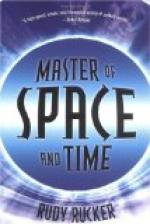In August of 1845 Morse sailed for Europe in an endeavor to enlist foreign capital. The investors of Europe proved no keener than those of America, and the inventor returned without funds, but imbued with increased patriotism. He had become convinced that the telegraph could and would succeed on American capital alone. In the next year a line was constructed from Philadelphia to Washington, thus extending the New York-Philadelphia line to the capital. Henry O’Reilly, of Rochester, New York, took an active part in this construction work and now took the contract to construct a line from Philadelphia to St. Louis. This line was finished by December of 1847.
The path having been blazed, others sought to establish lines of their own without regard to Morse’s patents. One of these was O Reilly, who, on the completion of the line to St. Louis, began one to Now Orleans, without authority from Morse or his company. O’Reilly called his telegraph “The People’s Line,” and when called to account in the courts insisted not only that his instruments were different from Morse’s, and so no infringement of his patents, but also that the Morse system was a harmful monopoly and that “The People’s Line” should be encouraged. It was further urged that Wheatstone in England and Steinheil in Germany had invented telegraphs before Morse, and that Professor Henry had invented the relay which made it possible to operate the telegraph over long distances. The suits resulted in a legal victory for Morse, and his patents were maintained.
But still other rival companies built lines, using various forms of apparatus, and though the courts repeatedly upheld Morse’s patent rights, the pirating was not effectively checked. The telegraph had come to be a necessity and the original company lacked the capital to construct lines with sufficient rapidity to meet the need. Within ten years after the first line had been put into operation the more thickly settled portions of the United States were served by scores of telegraph lines owned by a dozen different companies. Hardly any of these were making any money, though the service was poor and the rates were high. They were all operating on too small a scale and business uses of the telegraph had not yet developed sufficiently.




